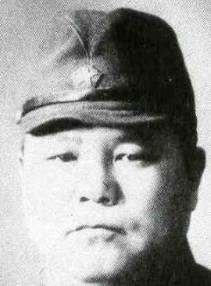Ryūkichi Tanaka
| Ryūkichi Tanaka | |
|---|---|
 General Ryūkichi Tanaka | |
| Born |
September 28, 1896 Shimane Prefecture, Japan |
| Died | November 24, 1972 (aged 76) |
| Allegiance | Empire of Japan |
| Service/branch |
|
| Years of service | 1913 -1945 |
| Rank | Major General |
| Battles/wars |
Second Sino-Japanese War World War II |
Ryūkichi Tanaka (田中 隆吉 Tanaka Ryūkichi, 28 September 1896 – 24 November 1972) was a general in the Imperial Japanese Army during World War II
Biography
Tanaka was born in what is now part of Yasugi city, Shimane prefecture, and attended military schools as a youth. He graduated from the 26th class of the Imperial Japanese Army Academy in 1913, specializing in artillery, and was assigned to serve with the IJA 23rd Field Artillery Regiment based on Okayama.[1]
After graduating from the 34th class of the Army Staff College in 1923, Tanaka served in various staff positions in the Imperial Japanese Army General Staff, and came into contact with Pan-Asianism theorist and nationalist writer Shūmei Ōkawa. He was sent on special assignment to Beijing and Kalgan from 1927-1929 to gather military intelligence. In October 1930, he was based in Shanghai, where he came into contact with Yoshiko Kawashima, and assisted her in establishing her spy network. He was living with Kawashima in Shanghai at the time of the Shanghai Incident of 1932.
Recalled to Japan in August 1932. Tanaka was appointed commander of the IJA 4th Field Artillery Regiment. He was attached to the IJA 1st Heavy Field Artillery Regiment from 1934 to 1935, and then attached to the 2nd Section of the Kwantung Army staff from 1935 to 1937. From 1937 to 1939, Tanaka was commanding officer of the 25th Mountain Artillery Regiment in Manchukuo, which was at the disastrous Battle of Lake Khasan.
Recalled to Japan from 1939 to 1940, Tanaka was appointed Chief of the Military Service Section, Military Administration Bureau within the Ministry of War. In March 1940, Tanaka was promoted to major general, and briefly returned to China as Chief of Staff of the Japanese First Army, during which time he initiated the Three Alls Policy and unsuccessful attempted to woo Chinese warlord Yen Hsi-shan of Shanxi Province to support the Japanese cause.[2]
At the end of 1940, Tanaka was recalled back to Japan, and the following year became Commandant of the Nakano School, the primary espionage and sabotage training facility for the Japanese army.[3]
Suffering from poor health, Tanaka went into the reserves until 1942 when he was attached to the Eastern Defense Army, and then retired.
In 1945, Tanaka was recalled and served as Commandant of Ratsu Fortress until the end of the war. During the International Military Tribunal for the Far East after the war, Tanaka testified three times for the prosecution and twice for the defense. He was used by chief prosecutor Joseph Keenan to persuade Hideki Tōjō to revise his testimony referring to Emperor Hirohito's ultimate authority.[4]
He died of colorectal cancer in 1972.
References
Books
- Dorn, Frank (1974). The Sino-Japanese War, 1937-41;: From Marco Polo Bridge to Pearl Harbor. MacMillan. ISBN 0-02-532200-1.
- Dower, John W. (1999). Embracing Defeat: Japan in the Wake of World War II. New York: New Press.
- Mercado, Stephen C. (2002). The Shadow Warriors of Nakano: A History of the Imperial Japanese Army's Elite Intelligence School. . ISBN 1-57488-443-3.
External links
- Ammenthorp, Steen. "Tanaka Ryukichi". The Generals of World War II.
- Japanese bio site